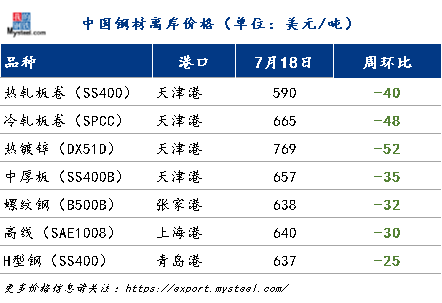Recently, the euro fell below the 1:1.01 mark against the US dollar, hitting a new low in the past 20 years. The rising cost of European steel imports may help European domestic steel prices stabilize and rebound, and promote exports. Under normal circumstances, summer is the off-season for steel trading, and some traders are more inclined to export steel. The current low exchange rate will make the local European steel market more price-competitive and easier to export. The current price of local HRC in Europe is US$885/ton EXW, a month-on-month decrease of about US$60/ton. According to Mysteel’s calculations, due to the seasonally weak summer steel demand, the price of hot rolled coil will fall by another about $100/t (about $120/t) in the next two months.
Of course, the impact of exchange rate depreciation on steel prices is short-term, but if it continues to depreciate, it may mean that the market economy is in a recession. In recent days, the European Commission lowered its previous forecast for EU economic growth to 1.5 percent from 2.3 percent. At the same time, due to rising energy prices, inflation expectations were raised and peaked in the third quarter.
In addition to the impact of exchange rates, rising transportation costs even made the price of imported HRC even higher than the local price for a time. The depreciation of the euro means a higher cost of imported raw materials for steel producers, because most producers settle in US dollars, thus increasing the production cost of steel mills and reducing the supply.

Post time: Jul-19-2022
